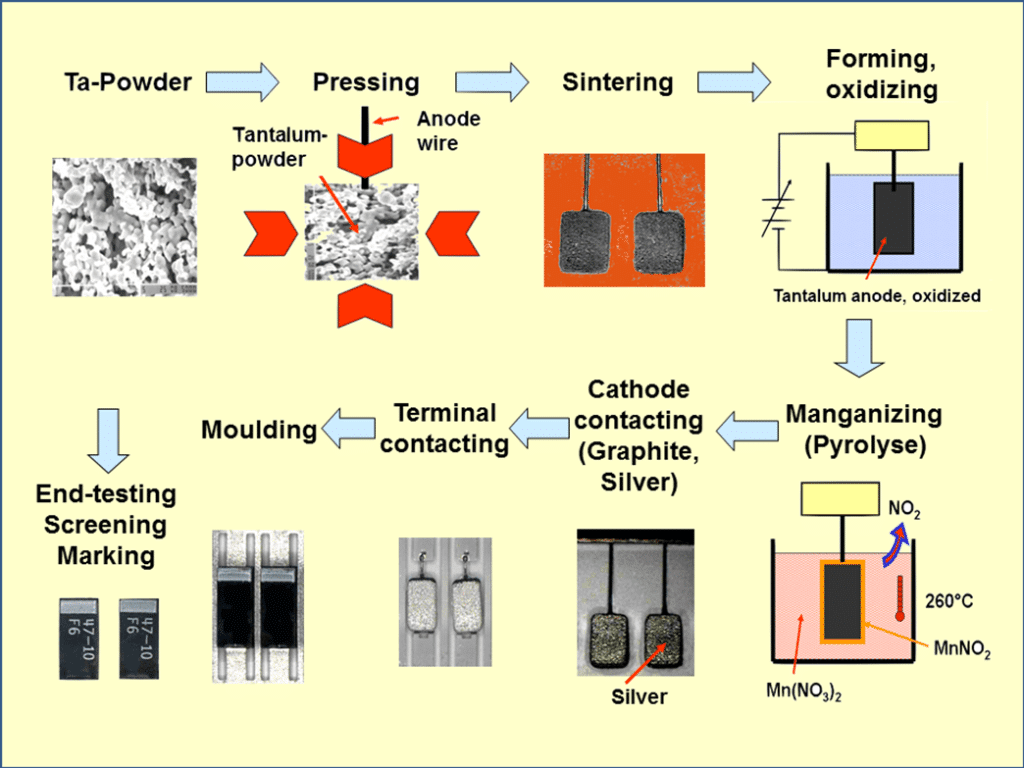Tantalum and Nb-based Capacitors Construction & Manufacturing
Tantalum capacitors are manufactured from a powder of relatively pure elemental tantalum metal. Niobum capacitors from niobium metal powder and NbO capacitors from NbO powder with metal-like properties.


The following manufacturing process chart describes common tantalum chip MnO2 solid electrolyte manufacturing flow. The process is identical also for niobium and NbO chip capacitors.
The powder is compressed around a tantalum wire (known as the riser wire) to form a “pellet”. The riser wire ultimately becomes the anode connection to the capacitor. This pellet/wire combination is subsequently vacuum sintered at high temperature (typically 1200 to 1800 °C) which produces a mechanically strong pellet and drives off many impurities within the powder. During sintering, the powder takes on a sponge-like structure, with all the particles interconnected into a monolithic spatial lattice.
The dielectric is then formed over all the tantalum particle surfaces by the electrochemical process of anodization. To achieve this, the “pellet” is submerged into a very weak solution of acid and DC voltage is applied. The total dielectric thickness is determined by the final voltage applied during the forming process. Initially the power supply is kept in a constant current mode until the correct voltage (i.e. dielectric thickness) has been reached.
The next stage for solid tantalum capacitors is the application of the cathode plate (wet tantalum capacitors use a liquid electrolyte as a cathode in conjunction with their casing). This is achieved by pyrolysis of manganese nitrate into manganese dioxide in MnO2 parts (as shown on the chart) or polymerization in case of conductive polymer types.
Top of the anode is then covered by layers of graphite and silver paste for good conductivity and assembled into a leadframe. The leadframe function as a holding media for rest of the manufacturing process – moulding, testing and ageing. In final process the capacitors are cut, trim & formed and creates its final terminations.

